Abstract
Isoprene emissions from the leaves of velvet bean (Mucuna pruriens L. var utilis) plants exhibited temperature response patterns that were dependent on the plant's growth temperature. Plants grown in a warm regimen (34/28°C, day/night) exhibited a temperature optimum for emissions of 45°C, whereas those grown in a cooler regimen (26/20°C, day/night) exhibited an optimum of 40°C. Several previous studies have provided evidence of a linkage between isoprene emissions and photosynthesis, and more recent studies have demonstrated that isoprene emissions are linked to the activity of isoprene synthase in plant leaves. To further explore this linkage within the context of the temperature dependence of isoprene emissions, we determined the relative temperature dependencies of photosynthetic electron transport, CO2 assimilation, and isoprene synthase activity. When measured over a broad range of temperatures, the temperature dependence of isoprene emission rate was not closely correlated with either the electron transport rate or the CO2 assimilation rate. The temperature optima for electron transport rate and CO2 assimilation rate were 5 to 10°C lower than that for the isoprene emission rate. The dependence of isoprene emissions on photon flux density was also affected by measurement temperature in a pattern independent of those exhibited for electron transport rate and CO2 assimilation rate. Thus, despite no change in the electron transport rate or CO2 assimilation rate at 26 and 34°C, the isoprene emission rate changed markedly. The quantum yield of isoprene emissions was stimulated by a temperature increase from 26 to 34°C, whereas the quantum yield for CO2 assimilation was inhibited. In greenhouse-grown aspen leaves (Populus tremuloides Michaux.), the high temperature threshold for inhibition of isoprene emissions was closely correlated with the high temperature-induced decrease in the in vitro activity of isoprene synthase. When taken together, the results indicate that although there may be a linkage between isoprene emission rate and photosynthesis, the temperature dependence of isoprene emission is not determined solely by the rates of CO2 assimilation or electron transport. Rather, we propose that regulation is accomplished primarily through the enzyme isoprene synthase.
Full text
PDF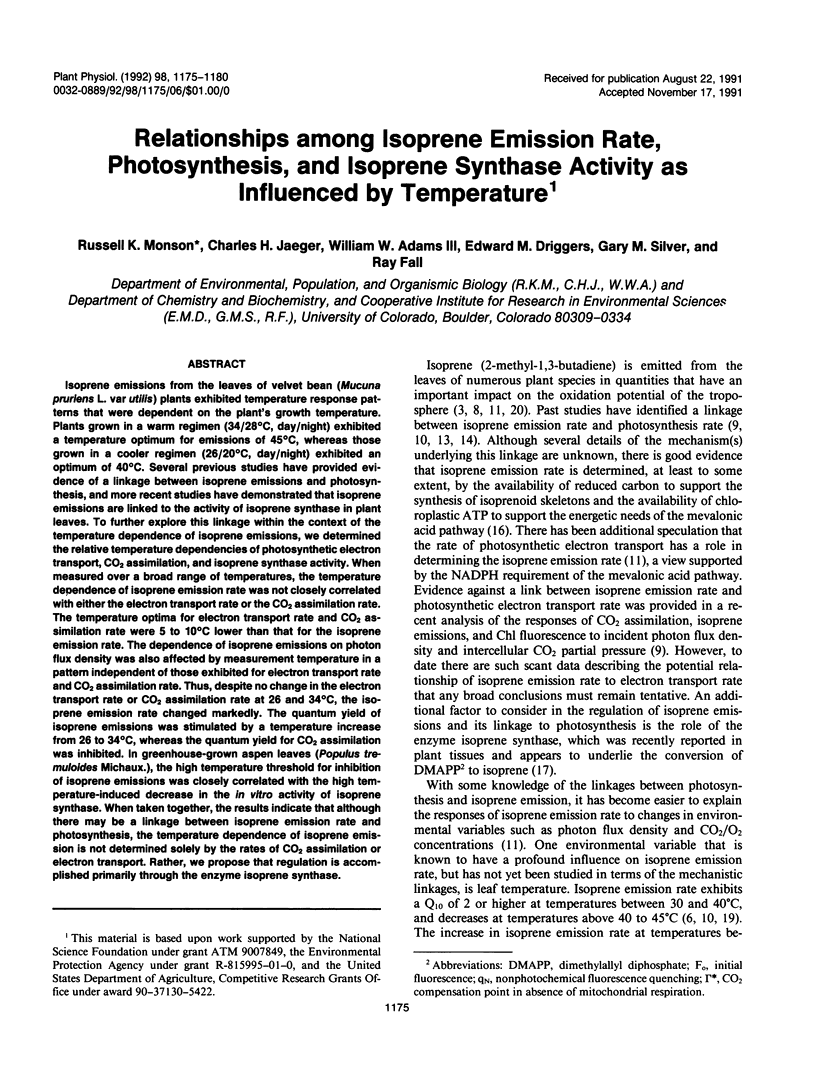
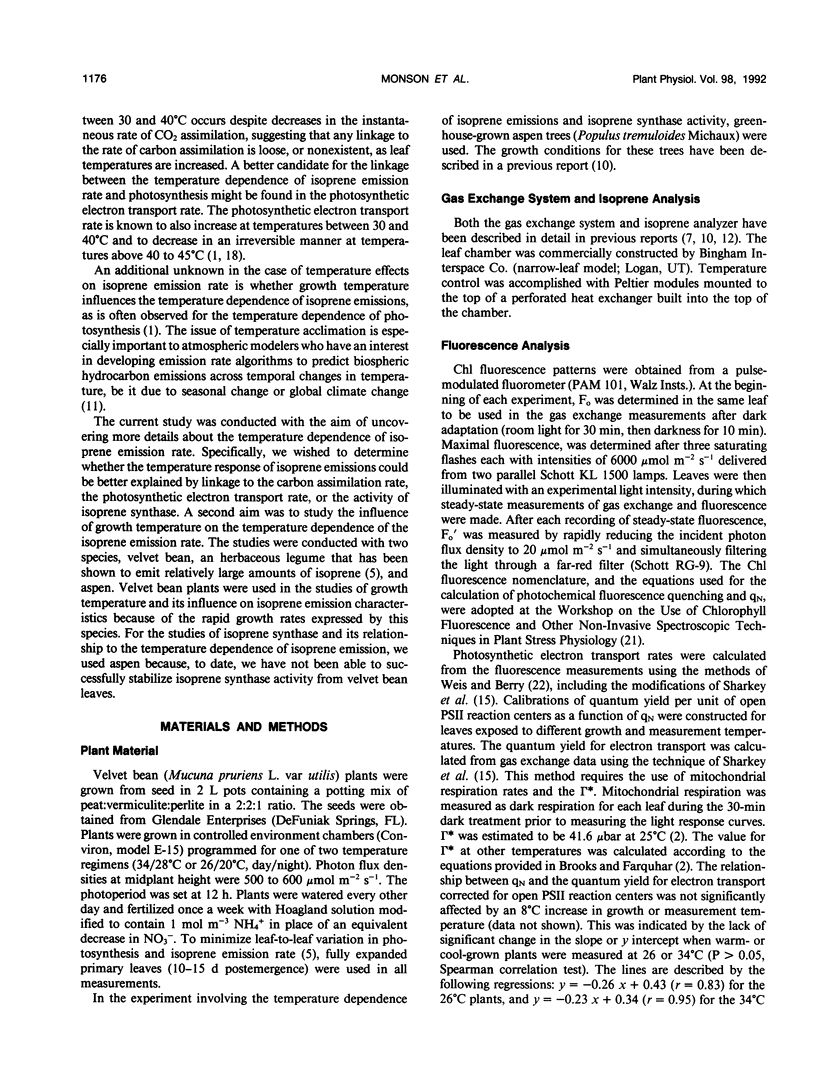

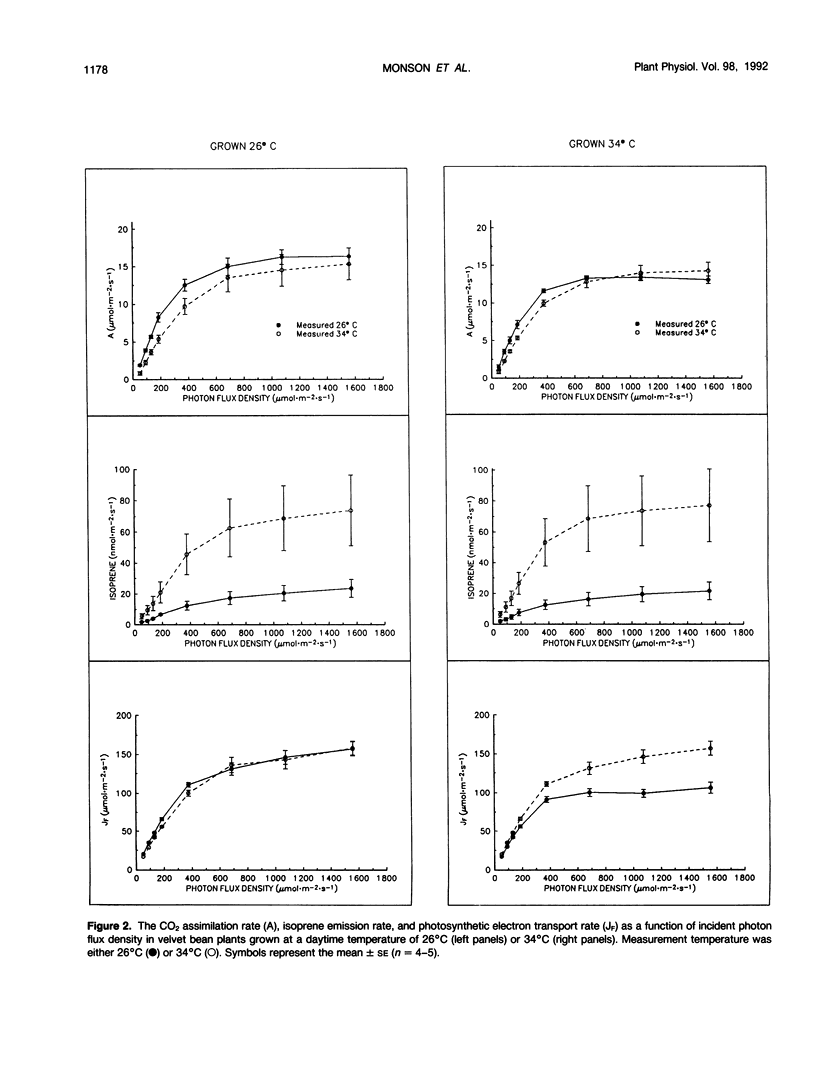
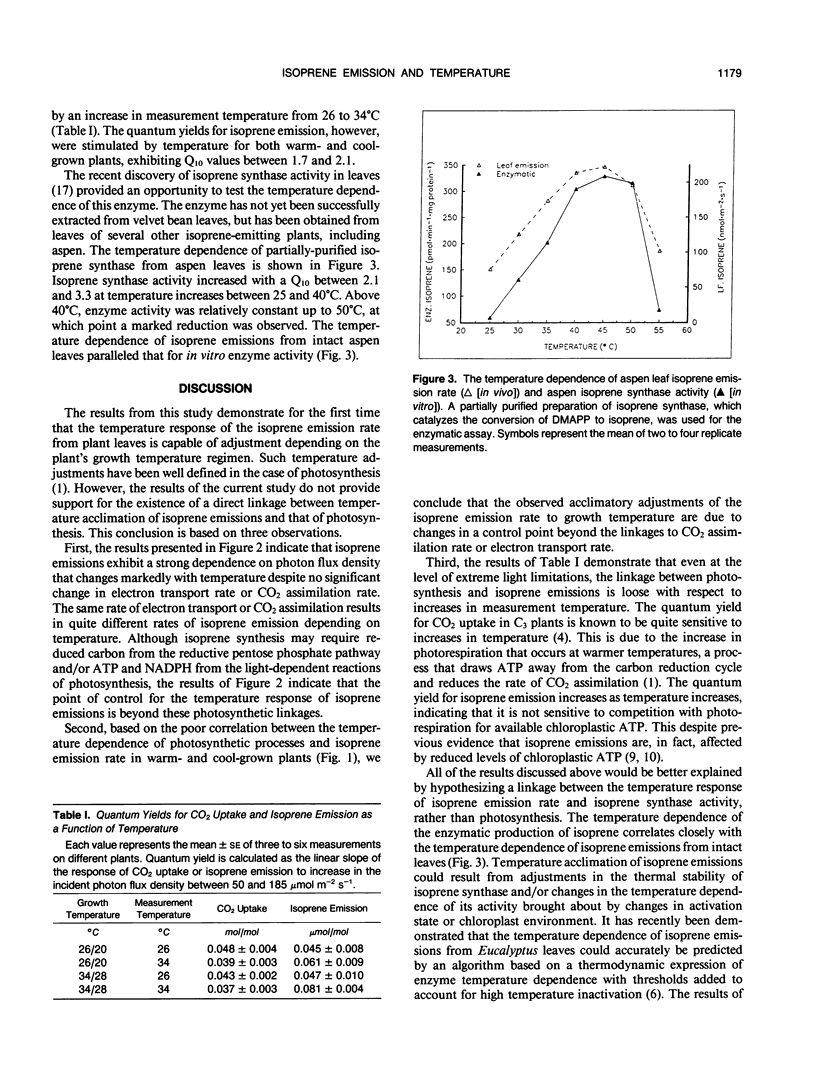
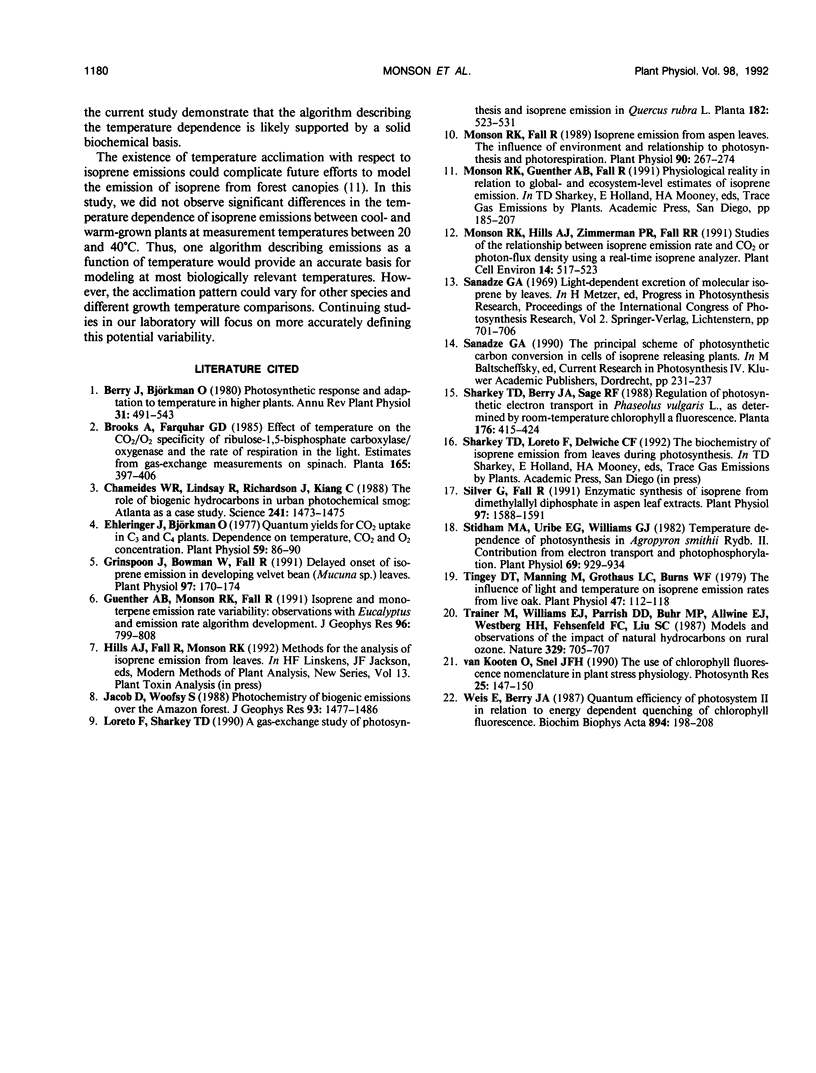
Selected References
These references are in PubMed. This may not be the complete list of references from this article.
- Chameides W. L., Lindsay R. W., Richardson J., Kiang C. S. The role of biogenic hydrocarbons in urban photochemical smog: Atlanta as a case study. Science. 1988 Sep 16;241(4872):1473–1475. doi: 10.1126/science.3420404. [DOI] [PubMed] [Google Scholar]
- Ehleringer J., Björkman O. Quantum Yields for CO(2) Uptake in C(3) and C(4) Plants: Dependence on Temperature, CO(2), and O(2) Concentration. Plant Physiol. 1977 Jan;59(1):86–90. doi: 10.1104/pp.59.1.86. [DOI] [PMC free article] [PubMed] [Google Scholar]
- Grinspoon J., Bowman W. D., Fall R. Delayed Onset of Isoprene Emission in Developing Velvet Bean (Mucuna sp.) Leaves. Plant Physiol. 1991 Sep;97(1):170–174. doi: 10.1104/pp.97.1.170. [DOI] [PMC free article] [PubMed] [Google Scholar]
- Monson R. K., Fall R. Isoprene emission from aspen leaves : influence of environment and relation to photosynthesis and photorespiration. Plant Physiol. 1989 May;90(1):267–274. doi: 10.1104/pp.90.1.267. [DOI] [PMC free article] [PubMed] [Google Scholar]
- Silver G. M., Fall R. Enzymatic synthesis of isoprene from dimethylallyl diphosphate in aspen leaf extracts. Plant Physiol. 1991 Dec;97(4):1588–1591. doi: 10.1104/pp.97.4.1588. [DOI] [PMC free article] [PubMed] [Google Scholar]
- Stidham M. A., Uribe E. G., Williams G. J. Temperature Dependence of Photosynthesis in Agropyron smithii Rydb. : II. CONTRIBUTION FROM ELECTRON TRANSPORT AND PHOTOPHOSPHORYLATION. Plant Physiol. 1982 Apr;69(4):929–934. doi: 10.1104/pp.69.4.929. [DOI] [PMC free article] [PubMed] [Google Scholar]


